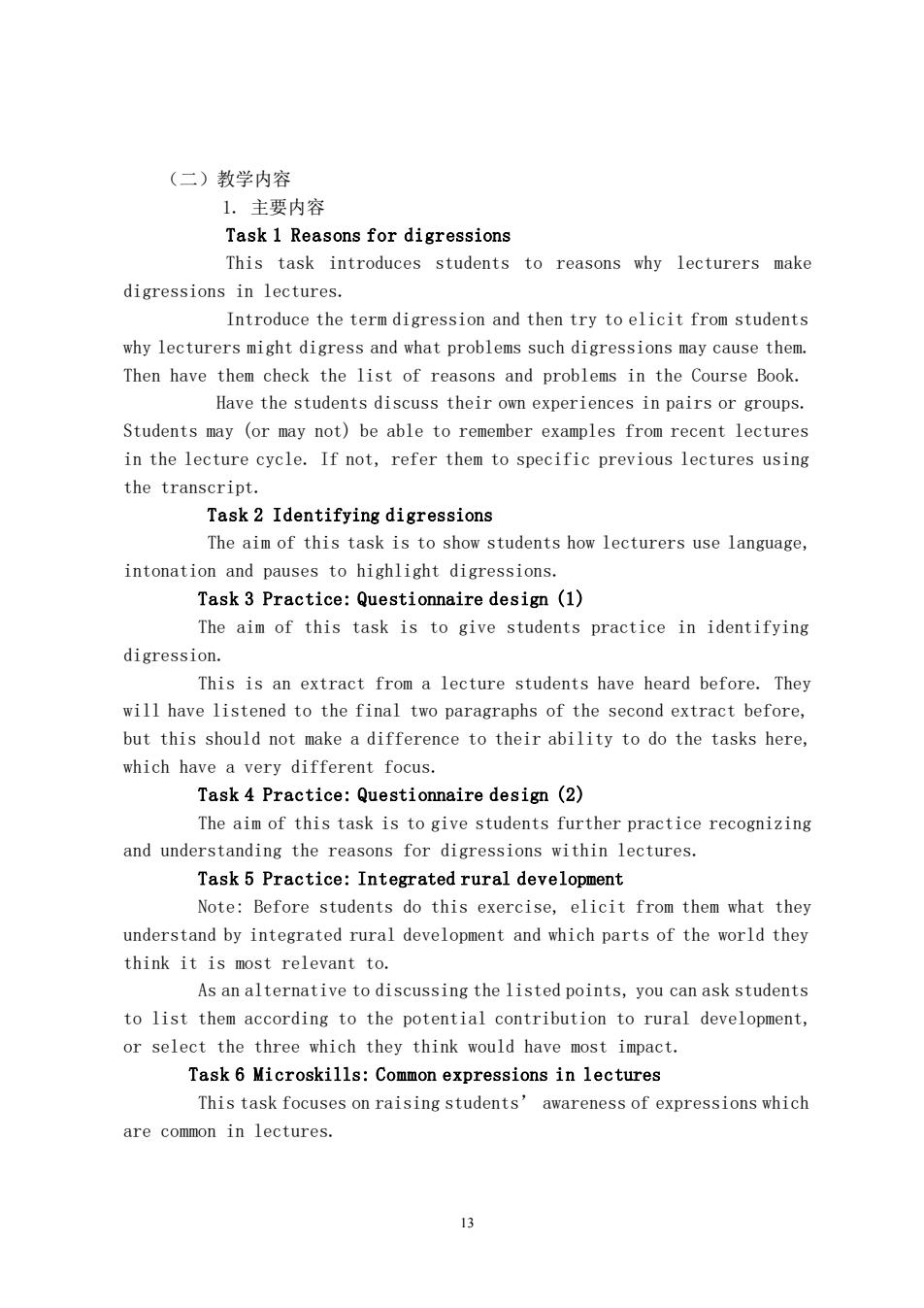正在加载图片...

(二)教学内容 1.主要内容 Task 1 Reasons for digressions This task introduces students to reasons why lecturers make digressions in lectures. Introduce the term digression and then try to elicit from students why lecturers might digress and what problems such digressions may cause them. Then have them check the list of reasons and problems in the Course Book. Have the students discuss their own experiences in pairs or groups. Students may (or may not)be able to remember examples from recent lectures in the lecture cycle.If not,refer them to specific previous lectures using the transcript. Task 2 Identifying digressions The aim of this task is to show students how lecturers use language, intonation and pauses to highlight digressions Task 3 Practice:Questionnaire design(1) The aim of this task is to give students practice in identifying digression. This is an extract from a lecture students have heard before.They will have listened to the final two paragraphs of the second extract before, but this should not make a difference to their ability to do the tasks here, which have a very different focus. Task 4 Practice:Questionnaire design(2) The aim of this task is to give students further practice recognizing and understanding the reasons for digressions within lectures. Task 5 Practice:Integrated rural development Note:Before students do this exercise,elicit from them what they understand by integrated rural development and which parts of the world they think it is most relevant to. As an alternative to discussing the listed points.you can ask students to list them according to the potential contribution to rural development, or select the three which they think would have most impact. Task 6 Microskills:Common expressions in lectures This task focuses on raising students'awareness of expressions which are common in lectures. 13 13 (二)教学内容 1. 主要内容 Task 1 Reasons for digressions This task introduces students to reasons why lecturers make digressions in lectures. Introduce the term digression and then try to elicit from students why lecturers might digress and what problems such digressions may cause them. Then have them check the list of reasons and problems in the Course Book. Have the students discuss their own experiences in pairs or groups. Students may (or may not) be able to remember examples from recent lectures in the lecture cycle. If not, refer them to specific previous lectures using the transcript. Task 2 Identifying digressions The aim of this task is to show students how lecturers use language, intonation and pauses to highlight digressions. Task 3 Practice: Questionnaire design (1) The aim of this task is to give students practice in identifying digression. This is an extract from a lecture students have heard before. They will have listened to the final two paragraphs of the second extract before, but this should not make a difference to their ability to do the tasks here, which have a very different focus. Task 4 Practice: Questionnaire design (2) The aim of this task is to give students further practice recognizing and understanding the reasons for digressions within lectures. Task 5 Practice: Integrated rural development Note: Before students do this exercise, elicit from them what they understand by integrated rural development and which parts of the world they think it is most relevant to. As an alternative to discussing the listed points, you can ask students to list them according to the potential contribution to rural development, or select the three which they think would have most impact. Task 6 Microskills: Common expressions in lectures This task focuses on raising students’ awareness of expressions which are common in lectures